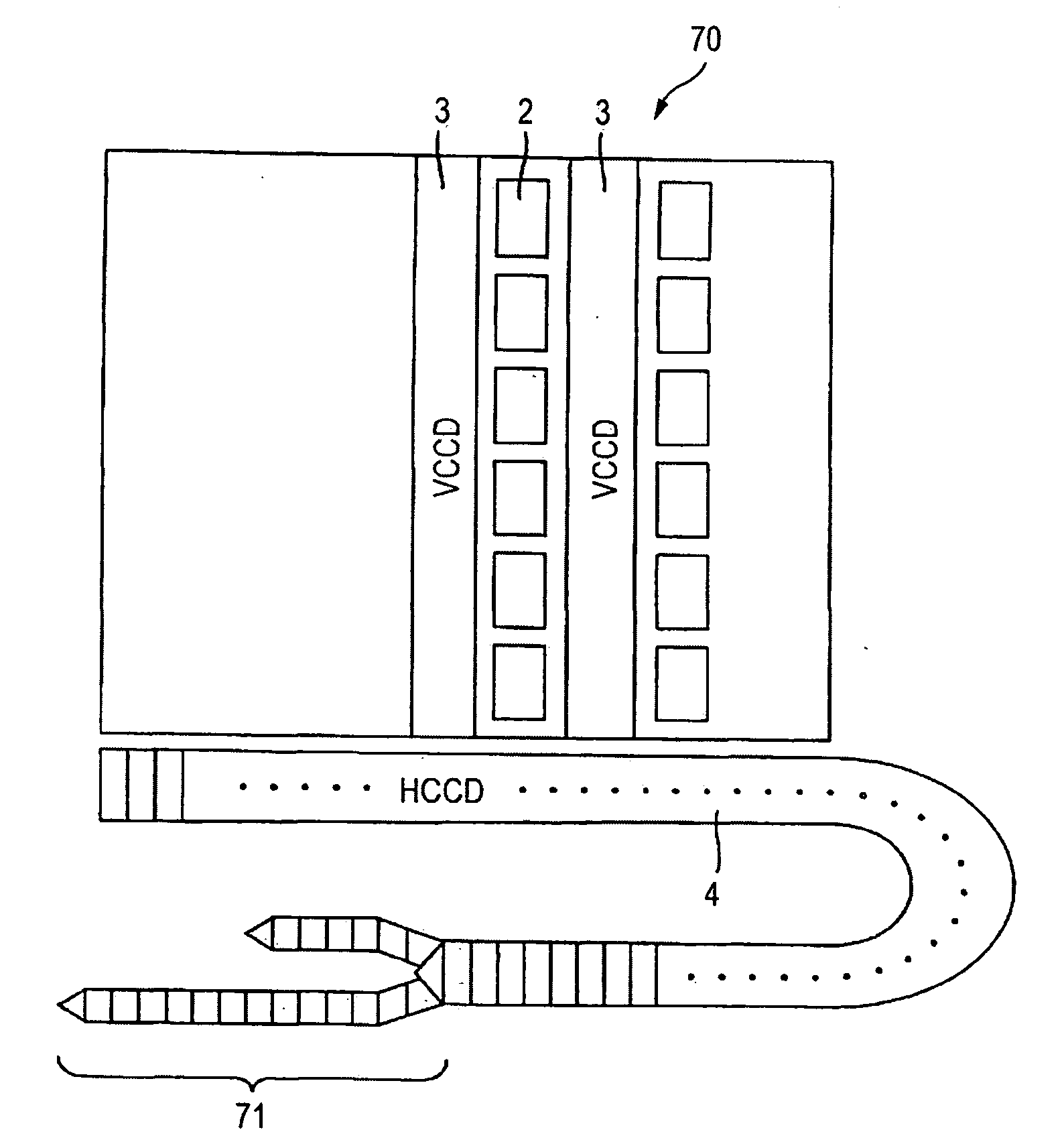Method and device for driving solid-state imaging device, imaging apparatus, and image synthesizing method
a solid-state imaging and imaging apparatus technology, applied in the direction of still video cameras, radiation controlled devices, television systems, etc., can solve the problems of difficult to improve the saturation signal amount as compared with the sensitivity, image having appropriate gradation cannot be obtained, and speed becomes low, so as to achieve a wide dynamic range
- Summary
- Abstract
- Description
- Claims
- Application Information
AI Technical Summary
Benefits of technology
Problems solved by technology
Method used
Image
Examples
first embodiment
[0070]FIG. 6 is a schematic representation of a method for driving a solid-state imaging device according to a second exemplary embodiment of the invention. In the first embodiment, the vertical charge transfer path is driven in electron multiplication so as to multiply one image data to be synthesized. It is also possible to execute an electron multiplication at a time reading signal charges into vertical charge transfer path 3 from photodiode 2, instead of performing an electron multiplication in the vertical charge transfer path. For example, JP-A-5-335549 discloses performing an electron multiplication at a time reading charges from the photodiode.
[0071]To read signal charges into the vertical charge transfer path 3 from the photodiode 2, the shorter the gate length and the larger the read pulse amplitude, the steeper is the potential gradient formed between the photodiode 2 and the vertical charge transfer path 3. The electron multiplication factor is proportional to the potent...
fourth embodiment
[0079]In the fourth embodiment, signal charges transferred from each end part of the vertical charge transfer path 3 to a position off the end part are transferred to an output amplifier 5 while an electron multiplication of the signal charges is performed at each stage in the electron multiplication transfer path 62. Although the electron multiplication factor per stage is small as 1% to 2%, the signal charges are transferred and multiplied at 50 to 100 stages, whereby the electron multiplication factor can be made double or triple. Of course, the electron multiplication factor also changes according to the amplitude of an electron multiplication pulse.
[0080]In the embodiment, a plurality of pieces of image data, which is data of an image of the same scene taken and which is different in electron multiplication factor, can be synthesized, thereby providing an image with the dynamic range enlarged.
[0081]FIG. 9 is a surface schematic drawing of a solid-state imaging device 70 having ...
PUM
 Login to View More
Login to View More Abstract
Description
Claims
Application Information
 Login to View More
Login to View More - R&D
- Intellectual Property
- Life Sciences
- Materials
- Tech Scout
- Unparalleled Data Quality
- Higher Quality Content
- 60% Fewer Hallucinations
Browse by: Latest US Patents, China's latest patents, Technical Efficacy Thesaurus, Application Domain, Technology Topic, Popular Technical Reports.
© 2025 PatSnap. All rights reserved.Legal|Privacy policy|Modern Slavery Act Transparency Statement|Sitemap|About US| Contact US: help@patsnap.com



